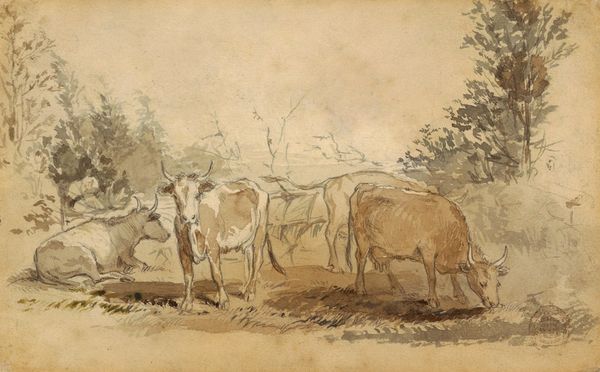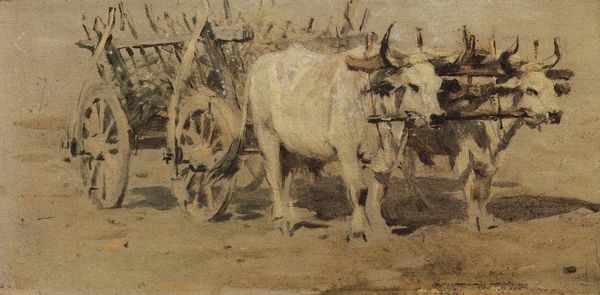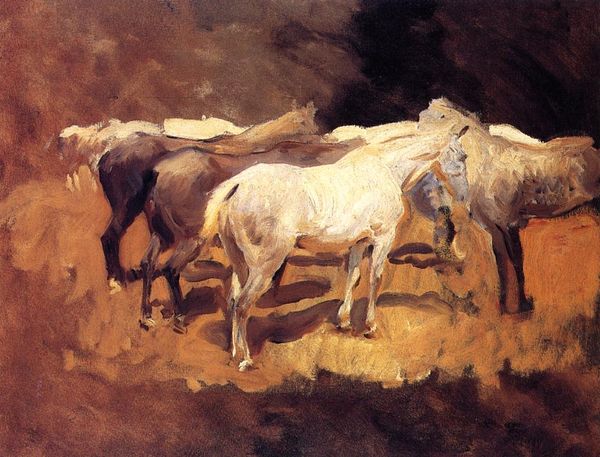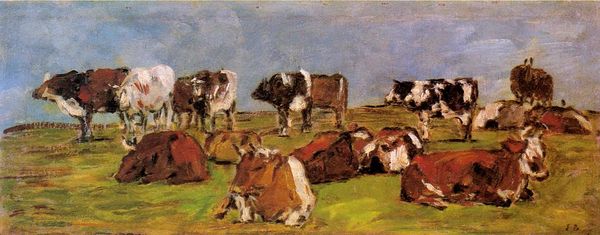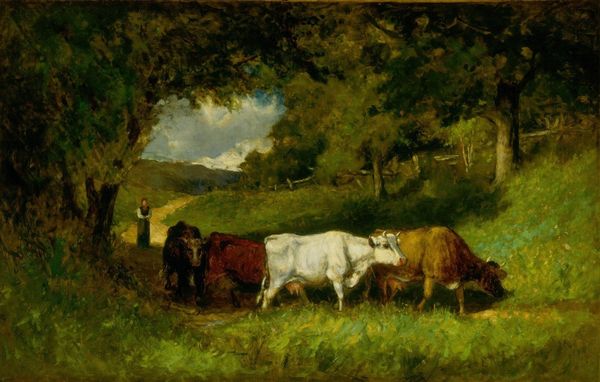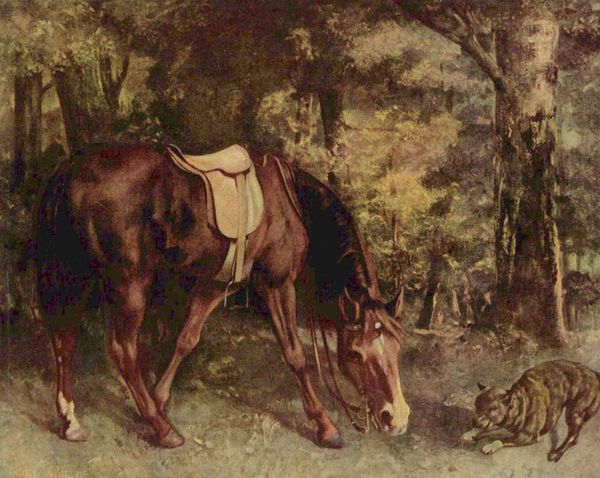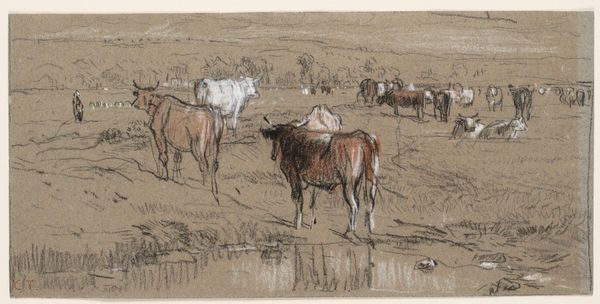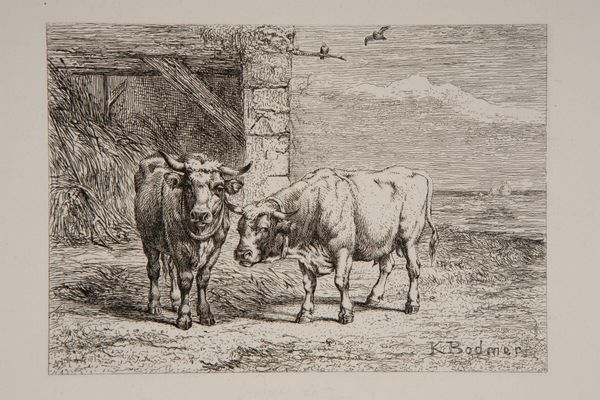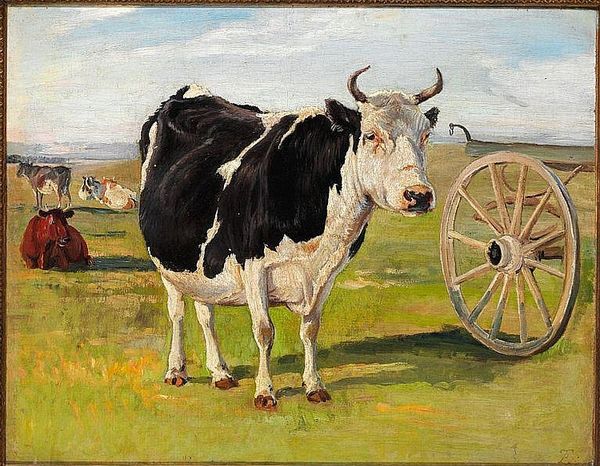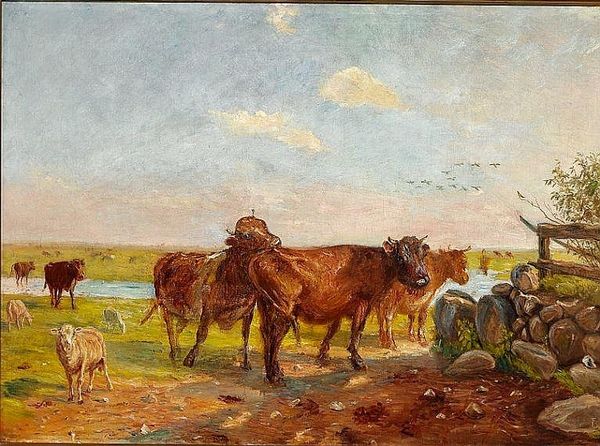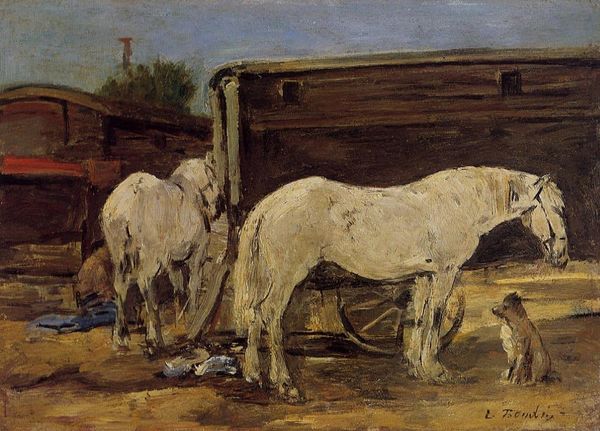
plein-air, oil-paint, impasto
#
animal
#
plein-air
#
oil-paint
#
vehicle
#
landscape
#
painted
#
oil painting
#
impasto
#
genre-painting
#
realism
Dimensions: 19 x 33 cm
Copyright: Public domain
Curator: Standing before us is Giovanni Fattori's "Farmer with ox cart," created around 1900. The oil on panel offers a glimpse into rural life in the Italian countryside. Editor: My immediate reaction is one of quiet dignity. There's a palpable connection between the farmer and his oxen, a stillness in their shared labor. Curator: Indeed. Fattori, as a key figure in the Macchiaioli movement, was deeply invested in depicting ordinary life and the landscape. These artists challenged academic conventions, embracing a more direct and immediate rendering of the world around them. Fattori here paints labour as undramatic and unremarkable but full of intimate interactions between humans and animals. Editor: Absolutely. This reflects the socialist leaning that influenced the Macchiaioli’s political positions in Tuscany at the time, seeking justice for farmers working the land for landowners in highly unjust social structures. This painting really encapsulates that sentiment, depicting working people with empathy and respect as opposed to high art’s ruling classes. Fattori makes everyday realities into significant social commentaries. Curator: We shouldn’t neglect how his technique contributed to this social statement. The broad brushstrokes, the visible impasto, and the plein-air approach allowed for capturing fleeting moments and the effects of light. And here, his study of light evokes almost melancholic mood. Editor: Fattori’s representation is less about perfect realism, and more about evoking the feeling of the scene. The farmer is a simplified silhouette. And this stylistic decision does wonders in bringing forth the idea of hard-working populations made indistinct and interchangeable. This painting is deeply aware of the dehumanization tactics used at the time, where only powerful individuals were worthy of perfect reproduction. Curator: You're pointing towards interesting nuances here. We see not a glorification, but a humanization of rural existence. Considering that many who became Macchiaioli, Fattori included, were veterans in the Risorgimento war, it may come as no surprise that the social condition of the population became of outmost importance to them. Editor: Ultimately, Fattori gifts dignity back to his subjects. He affirms humanity across class.
Comments
No comments
Be the first to comment and join the conversation on the ultimate creative platform.

